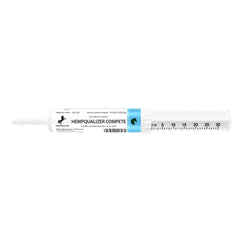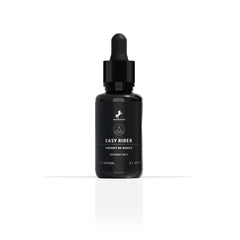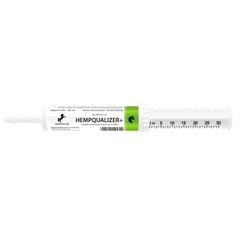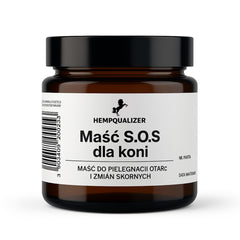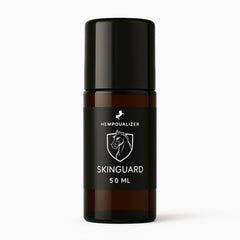Osteoarthritis – the Silent Enemy of Sport and Recreational Horses
Osteoarthritis (OA) is one of the most frequently diagnosed musculoskeletal disorders in horses. This degenerative joint disease leads to the progressive loss of articular cartilage, resulting in pain, limited mobility, and a reduced quality of life. Studies show that OA is responsible for approximately 60% of lameness cases in horses, making it a leading cause of early retirement in both sport and working horses.
Conventional treatment methods for OA focus mainly on symptom relief. The use of non-steroidal anti-inflammatory drugs (NSAIDs) or steroids can temporarily reduce pain and inflammation, but do not address the root cause. Moreover, long-term use of these medications can lead to serious side effects such as gastric irritation, kidney damage, or blood disorders.
Cannabinoids – The Future of OA Therapy
In the search for more effective and safer treatments, researchers have turned their attention to the endocannabinoid system (ECS), which plays a key role in maintaining joint health. The discovery of CB1 and CB2 cannabinoid receptors in joint cartilage and bone tissue has opened the door to investigating phytocannabinoids in OA therapy.
One of the most promising compounds is cannabigerol (CBG) – a lesser-known cannabinoid that exhibits anti-inflammatory, chondroprotective (cartilage-protecting), and potentially regenerative properties.
Scientific Evidence Supporting CBD and CBG in OA Treatment
Groundbreaking research from Penn State College of Medicine has shown that a combination of CBG and CBD significantly reduces inflammation and slows down joint degeneration. In experiments using mouse models, researchers compared the effects of CBD and a CBD/CBG blend on OA. The results were clear:
✅ CBD and CBG reduce the thickness of the synovial membrane, indicating anti-inflammatory activity.
✅ CBG protects cartilage more effectively than CBD and supports regeneration of cartilage cells (chondrocytes).
✅ CBG activates the CB2 receptor, which plays a key role in inhibiting cartilage-degrading enzymes and supports aggrecan production – a major component of the cartilage matrix.
Additionally, a recent study published in Frontiers in Veterinary Science evaluated the effectiveness of oral CBG/CBD oil supplementation in horses suffering from chronic OA. In the study, 24 horses were given 0.07 mg/kg of CBG and CBD daily for 14 days. Key findings included:
🔹 Significant reduction in pain measured using the HCPS (Horse Chronic Pain Scale).
🔹 Decrease in white blood cells, neutrophils, and monocytes – indicating reduced inflammation.
🔹 No adverse effects – none of the horses required rescue medication or experienced negative side effects.
CBG – A New Standard in Equine OA Therapy
Cannabigerol may become the new standard in the treatment of OA in horses, offering effectiveness comparable to NSAIDs but without the harmful side effects. Key advantages of CBG include:
✔️ Natural anti-inflammatory effect – reduces swelling and pain.
✔️ Cartilage protection – prevents further joint degradation.
✔️ Safe usage profile – no side effects typical of NSAIDs and steroids.
Hempqualizer – Natural Support in OA Therapy
If you are looking for a supplement that contains both CBG and CBD, we recommend considering Hempqualizer or Hempqualizer+.
- Aragona F., Tabbì M., Gugliandolo E., Giannetto C., D’Angelo F., Fazio F., Interlandi C. (2024). Role of cannabidiolic acid or the combination of cannabigerol/cannabidiol in pain modulation and welfare improvement in horses with chronic osteoarthritis. Frontiers in Veterinary Science. DOI: 10.3389/fvets.2024.1496473
- Elbarbary R.A., Kamal F. (2022). Distinctive Therapeutic Effects of Non-Euphorigenic Cannabis Extracts in Osteoarthritis. Cannabis and Cannabinoid Research.

